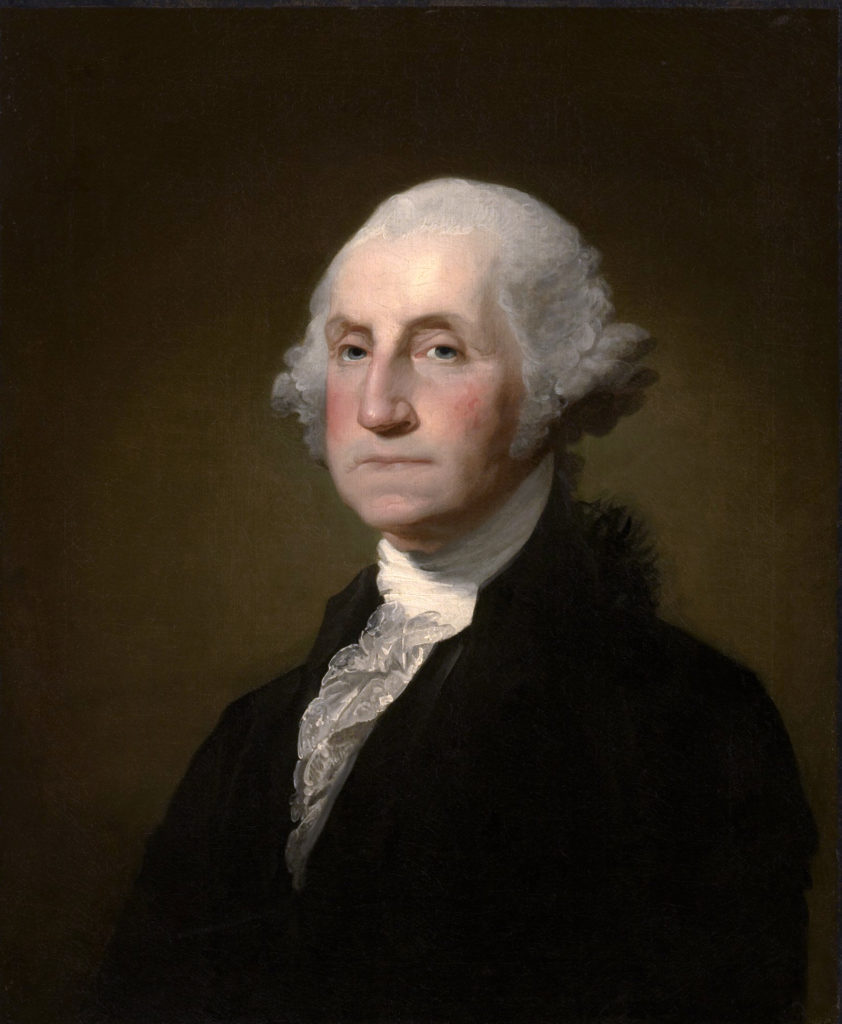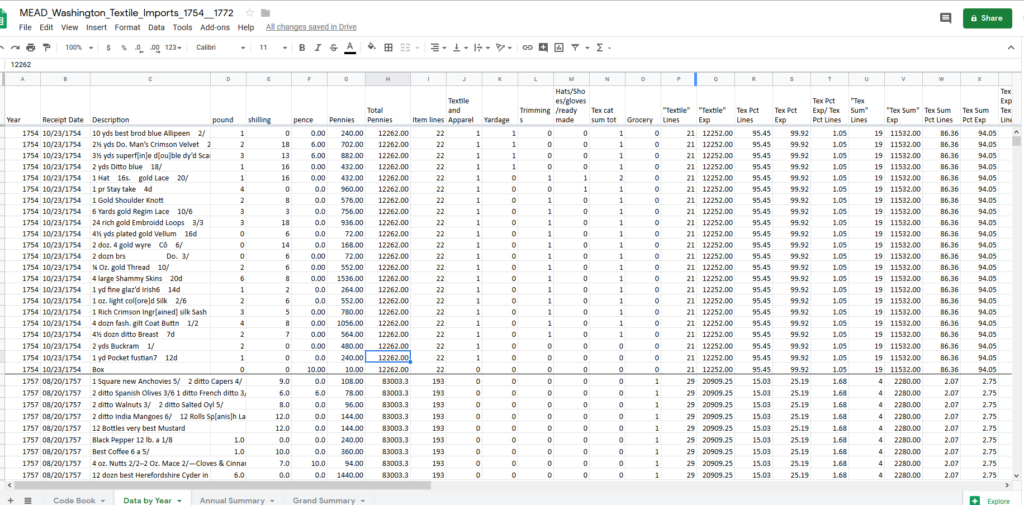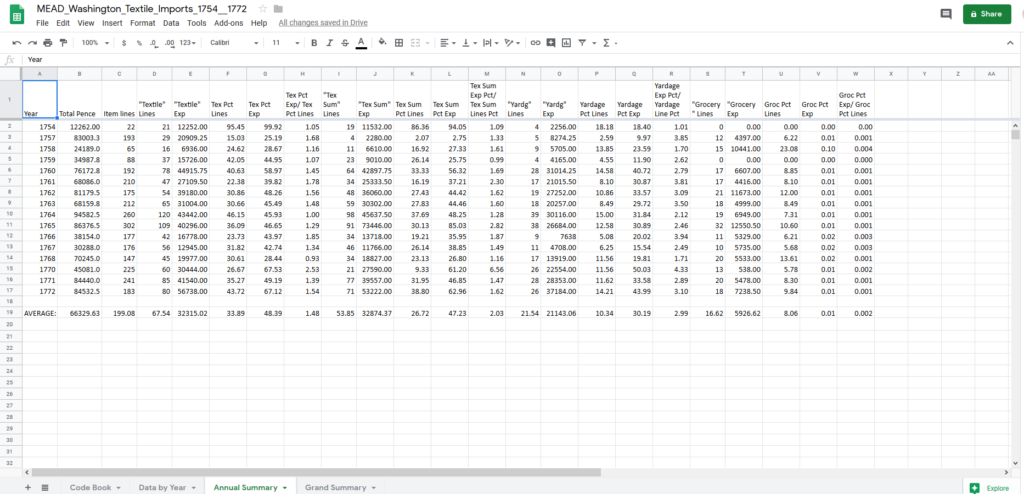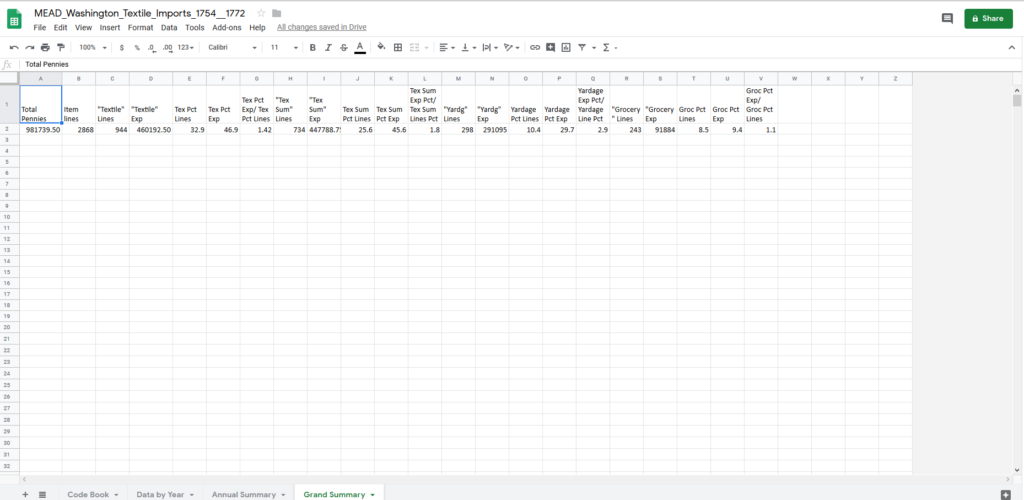Data Critique: George Washington’s English Imports, 1754-1772

Prior to becoming the first President of the United States, George Washington was a man of immense wealth thanks in large part to his tobacco exports to England. Wendy Lucas, of the University of Central Arkansas, and Noel Campbell, a researcher with Black, Brown, Brindle & Associates, analyzed the shipping receipts of George Washington to understand the significance of textiles in elite households in colonial America. Washington often wrote to the ‘factors’ selling his product to use the revenue and purchase goods to send to him. They chose Washington based on his high social standing and because many of his records have survived thanks to his military and political positions.
The information contained within the data set was collected from The Papers of George Washington at the National Archives. They also acknowledge that Mount Vernon has conducted a similar analysis of Washington’s receipts. Here we are able to read the correspondence between George Washington and Robert Cary & Co. from 1754-1772, minus the years 1755, 1756, and 1769. The data is separated into three sheets: “Data by Year”, “Annual Summary”, and “Grand Summary.”

“Data by Year” draws information from 27 receipts with 2869 rows of data. The columns show the cost in pounds, shillings, pence, and pennies. To distinguish cloth and textile purchases from other items, a ‘1’ was used to denote cloth and a ‘0’ for everything else. The columns represent each segment of data the team revolved their research around. They analyzed Washington’s receipts and created columns that would pull out the amount/cost of textiles and cloth from the bill to compare it with the general (grocery) goods that were ordered. There are 5 columns for cost because of the different currencies that were exchanging hands, percentages of textiles/cloth in each receipt and the amount in yards. To be objective, the same data was included for the grocery items to allow for comparison.

“Annual Summary” condenses all the individual item purchases for each year. Through this we can easily see how much Washington spent on textiles compared to general goods in a single year. For example, out of the 22 items he purchased in 1754, 21 were textiles; good for 95.45% of his order and costing 99.92% of his total expenditure for that year. Finally, the “Grand Summary” sheet provides a single row of the total expenditures of all items and the amount purchased. In total, Washington spent 981,739.50 ‘total pennies’ for 2868 lines of items. Textiles and cloth represented 46.9% (944 lines) of this.

While the authors of the data set acknowledge that Washington’s total revenue from some of his Tobacco sales were often less than the purchase price of his goods, they do not compare the two. This loss is the result of the purchase price of his shopping list as well as fees charged by the British ‘factors’ that he tasked with securing the items, shipping costs, insurance costs, etc. It does not include names of those involved in the transactions. While this information is not required to understand the significance of textiles in Washington’s home, including this would added another level of data that may be useful to researchers looking at the cost of goods in pre-Revolutionary War England and America.